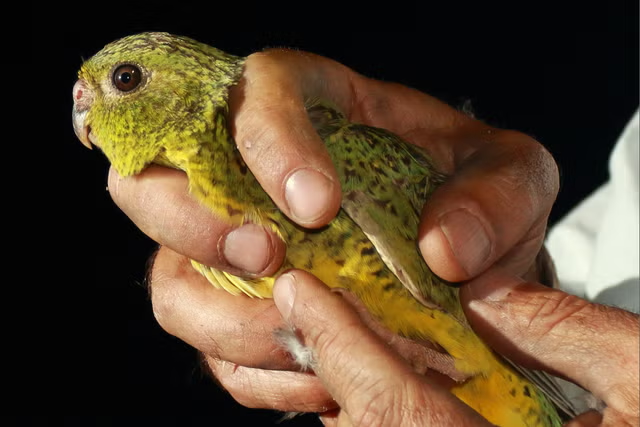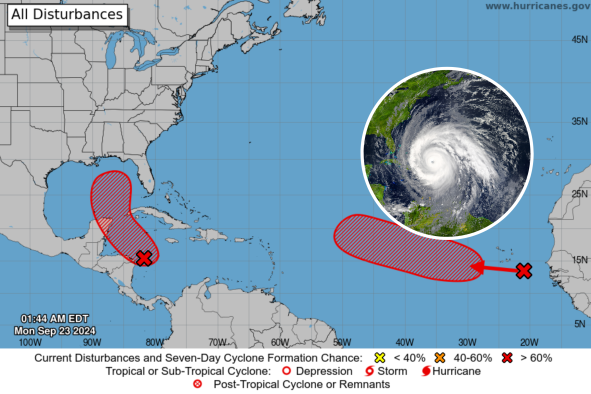Earth will have an extra moon for a couple of weeks this fall, and it may return for a second round in a few decades.
A 33-foot asteroid named 2024 PT5 is expected to be pulled into orbit around the Earth between September 29 and November 25, becoming a temporary "mini-moon." This passing space rock was first spotted by South African researchers, who revealed their findings in a paper in the journal Research Notes of the American Astronomical Society.
"The recently discovered small body 2024 PT5 follows a horseshoe path and it will become a mini-moon in 2024, from September 29 until November 25," the researchers wrote in the paper. 2024 PT5 is expected to return to orbit the Earth again in 2055.
A mini-moon is a small object, often an asteroid or a fragment of debris, that temporarily orbits Earth before reentering Earth's atmosphere or escaping back into space. Unlike the moon, which is Earth's permanent natural satellite, mini-moons are typically captured by Earth's gravity for short periods, often a few months or years, before they leave orbit.
2024 PT5 was first noticed on August 7 by NASA's Asteroid Terrestrial-Impact Last Alert System and normally orbits the sun in something called the Arjuna asteroid belt. Sometimes asteroids in this belt, which orbits fairly close to Earth, can get caught up in Earth's gravity, causing them to briefly circle our planet before zipping back into space.
Only five other mini-moons have ever been detected orbiting the Earth.
"Temporarily captured flybys never complete one revolution around Earth, while temporarily captured orbiters complete one or more. Examples of the latter were 2006 RH120 that remained gravitationally bound to Earth from 2006 July to 2007 July and 2020 CD3 that escaped early in 2020 May after being bound to Earth for several years," the researchers wrote.
Previous temporarily captured flybys include 1991 VG, which briefly swung around the Earth in 1992, and 2022 NX1, which went into Earth orbit in 1981 and 2022.
"The recently discovered Apollo-class NEO 2024 PT5 follows a path that resembles that of 2022 NX1 and may soon become a mini-moon," the researcher wrote.
2022 NX1 is forecast to return in 2051.
2024 PT5 is expected to swing around the Earth along a horseshoe-shaped path but not fully complete a single orbit around our planet, making it a "temporarily captured flyby."
Sadly, most people on Earth will be unable to catch a glimpse of the mini-moon as it travels past us.
"The object is too small and dim for typical amateur telescopes and binoculars," study author Carlos de la Fuente Marcos told Space.com. "However, the object is well within the brightness range of typical telescopes used by professional astronomers."
Astronomers have been fooled before by man-made objects appearing to be mini-moons. An object named J002E3 that was spotted in 2002 was initially thought to be an asteroid orbiting Earth but was later found to be the third stage of the Apollo Saturn V rocket.
2024 PT5 is thought to be a legitimate asteroid, however.
"The object is unlikely to be artificial as its short-term dynamical evolution closely resembles that of 2022 NX1, a confirmed natural object," the researchers wrote.
Do you have a tip on a science story that Newsweek should be covering? Do you have a question about asteroids? Let us know via science@newsweek.com.
Reference
De La Fuente Marcos, C., & De La Fuente Marcos, R. (2024). A Two-month Mini-moon: 2024 PT5 Captured by Earth from September to November. Research Notes of the AAS. https://doi.org/10.3847/2515-5172/ad781f
Disclaimer: The copyright of this article belongs to the original author. Reposting this article is solely for the purpose of information dissemination and does not constitute any investment advice. If there is any infringement, please contact us immediately. We will make corrections or deletions as necessary. Thank you.



